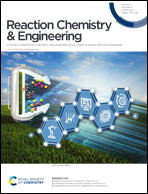Visible light responsive metalloporphyrin-sensitized TiO2 nanotube arrays for artificial photosynthesis of methane
Abstract
The conversion of CO2 and water into valuable chemicals under sunlight irradiation is of great significance for solving the widespread problems of both limited energy sources and global warming. In this work, new artificial photosynthesis was established through a photocatalysis process of reducing CO2 to CH4. A photocatalyst compounded from a porphyrin (metalloporphyrin) and TiO2 nanotube arrays (TiO2NTs) was prepared, and its photocatalytic performance for CO2 reduction under Xe lamp irradiation was studied. Compared with the pure TiO2NTs, the photocatalytic CO2 reduction activity of metalloporphyrin-sensitized TiO2NTs is significantly enhanced. The amount of methane produced with the cobalt tetra(4-carboxyphenyl)porphyrin/TiO2NTs (CoTCPP/TiO2NTs) photocatalyst is about 5.5 times higher than that produced with TiO2NTs alone. The improvement of photocatalytic activity can be ascribed to the enhancement of light absorption ability of CoTCPP/TiO2NTs and the inhibition of electron–hole recombination. Furthermore, according to the results of the photocatalytic and photo(electro)chemical experiments, a probable mechanism for the photoreduction of CO2 over CoTCPP/TiO2NTs is presented.



 Please wait while we load your content...
Please wait while we load your content...